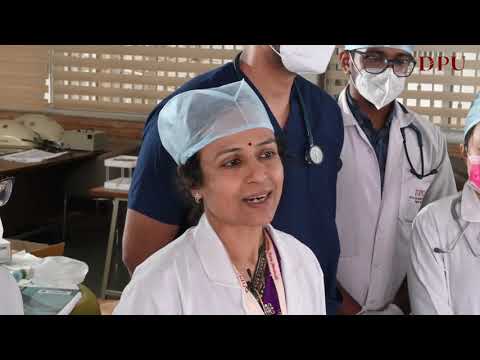Medically Assisted Procreation: The Pros and Cons
Contents
- Introduction
- What is Medically Assisted Procreation?
- The Pros of Medically Assisted Procreation
- The Cons of Medically Assisted Procreation
- The Bottom Line – Pros and Cons of Medically Assisted Procreation
- Who is a Candidate for Medically Assisted Procreation?
- The Cost of Medically Assisted Procreation
- The Risks of Medically Assisted Procreation
- The Success Rate of Medically Assisted Procreation
- The Emotional Impact of Medically Assisted Procreation
When it comes to starting a family, there are many options available to couples nowadays. One of these options is Medically Assisted Procreation (MAP). In this blog post, we’ll explore the pros and cons of this fertility treatment option so that you can make an informed decision.
Checkout this video:
Introduction
Medical Assisted Procreation (MAP) is a process by which fertility treatments are used to help couples conceive a child. MAP can be used in cases of infertility, or when a couple wants to have a child but is unable to do so naturally.
MAP has many benefits, including the fact that it can help couples have children who might not otherwise be able to have them. However, there are also some risks associated with the process, and it is important to weigh the pros and cons before making a decision about whether or not to use MAP.
What is Medically Assisted Procreation?
In vitro fertilization (IVF) is one type of assisted reproductive technology (ART). ART involves the retrieval of eggs from a woman’s ovaries and fertilization of the eggs in a laboratory. The resulting embryos are then transferred to the woman’s uterus.
IVF can be used to treat a wide variety of fertility problems, including:
-Problems with the ovaries: Ovarian problems can include Developmental problems, such as Turner syndrome or Fragile X syndrome.
-Problems with the uterus: Uterine conditions that can cause fertility problems include Asherman’s syndrome and Fibroids.
-Egg quality: Poor egg quality is a common cause of fertility problems in women over the age of 35.
-Endometriosis: This condition occurs when tissue that normally lines the inside of your uterus grows outside of it. Endometriosis can cause scarring and adhesions, which can interfere with implantation and embryo development.
-Male factor infertility: Male factor infertility can be caused by a variety of factors, including low sperm count, poor sperm motility, or blockages in the ejaculatory ducts.
IVF can also be used if you want to conceive using donor eggs or sperm, or if you want to conceive using both donor eggs and donor sperm.
The Pros of Medically Assisted Procreation
Medically assisted procreation (MAP), also known as fertility treatments, can help many couples and individuals conceiving a child when they are having difficulties doing so naturally. While there are some risks associated with MAP, there are also many potential benefits.
Some of the potential benefits of MAP include:
-Allowing couples or individuals with fertility problems to have children
-Achieving a successful pregnancy when it would not have been possible without medical intervention
-Increasing the chances of having a baby for those who have had multiple miscarriages or failed IVF cycles
-Giving hope to those who have been told they are unable to conceive without medical intervention
In addition, there are also many psychological benefits associated with MAP. These can include:
-Providing couples or individuals with a sense of control and empowerment over their fertility journey
-Reducing feelings of helplessness, anxiety, and despair associated with infertility
-Increasing self-esteem and self-confidence
-Improving relationship satisfaction
The Cons of Medically Assisted Procreation
There are a number of risks associated with medically assisted procreation, which is why it is such a controversial topic. Some of the potential risks include:
-Multiple births: If more than one embryo is implanted, there is a higher risk of multiple births. This can lead to health complications for both the mother and the babies.
-Premature birth: Premature birth is more common in babies conceived through medically assisted procreation. This can cause lifelong health problems for the child.
-Birth defects: There is a higher risk of birth defects in babies conceived through medically assisted procreation.
-Emotional risks: The emotional risks associated with medical procreation are often overlooked. The process can be emotionally draining, and it can be difficult to deal with if the procedure is unsuccessful.
The Bottom Line – Pros and Cons of Medically Assisted Procreation
Like any complex decision, there are pros and cons to medically assisted procreation. Some people feel that the potential benefits outweigh the risks, while others believe that the risks are too great. Here is a look at some of the key points to consider.
Pros:
– Medically assisted procreation can help couples who are unable to conceive a child naturally.
– It can also help couples who have a genetic disorder that they do not want to pass on to their children.
– In some cases, medically assisted procreation can be used to preserve fertility in cancer patients who are about to undergo treatment that may damage their reproductive system.
– Medically assisted procreation can give hope to couples who have experienced multiple miscarriages or failed IVF cycles.
Cons:
– There is always a risk of complications during medically assisted procreation, which can lead to serious health problems for both the mother and the child.
– Medically assisted procreation is an expensive procedure, and it is not always covered by insurance.
– There is a risk of multiple births when medically assisted procreation is used, which can put a strain on both the parents and the children.
– Some people believe that medically assisted procreation is unethical and morally wrong.
Who is a Candidate for Medically Assisted Procreation?
There are many factors to consider when determining who is a candidate for medically assisted procreation. Some of the key factors include:
-The age of the woman
-The health of the woman
-The health of the man
-The egg quality
-The sperm quality
-The uterine environment
-The financial cost
-The emotional cost
The Cost of Medically Assisted Procreation
The cost of medically assisted procreation (MAP) can be a significant barrier for many couples or individuals who want to start a family. In vitro fertilization (IVF), the most common type of MAP, can cost upwards of $15,000 per cycle, and often requires multiple cycles before success is achieved. In addition, there are often many other associated costs, such as medications, which can add several thousand dollars to the overall bill. For couples who are struggling with infertility, these costs can be prohibitive.
On the other hand, there are also many families who have been able to have children thanks to MAP. For them, the financial cost is worth it in order to have the family they always wanted. Additionally, there are sometimes financial assistance programs available to help offset the cost of treatment. These programs can make treatments more affordable for families who might not otherwise be able to afford them.
The Risks of Medically Assisted Procreation
There are a number of risks associated with medically assisted procreation, including multiple births, premature delivery, low birth weight, and complications during pregnancy and delivery. However, many of these risks can be minimized with proper medical supervision and care.
The Success Rate of Medically Assisted Procreation
Since the first test-tube baby was born in 1978, the number of babies born through medically assisted procreation has risen steadily. According to the Centers for Disease Control and Prevention (CDC), about 1% of all live births in the United States each year are now the result of in vitro fertilization (IVF) and other fertility treatments.
One of the main reasons couples opt for IVF is because they have been trying to conceive for a while without success. In fact, most couples who undergo IVF do so because of female infertility issues. However, male factor infertility contributes to about 30-40% of all cases of infertility. Additionally, about 10% of cases are considered unexplained, which means that there is no single cause that can be identified.
With such high success rates, it’s no wonder that so many couples are eager to give IVF a try. However, there are also some potential risks and drawbacks that you should be aware of before making a decision.
For example, IVF is a very expensive process, and it is not always covered by insurance. The average cost of one cycle of IVF is $12,000-$15,000, but the price can go up to $20,000 or more depending on the specific treatment protocol used and the medications required. If you require more than one cycle, as most couples do, the costs can add up quickly. Additionally, there is no guarantee that IVF will be successful even after multiple cycles.
Another potential downside to IVF is the increased risk for certain complications during pregnancy and delivery. For example, women who conceive via IVF have a slightly higher risk for developing placenta previa (when the placenta covers part or all of the cervix) and premature deliveries compared to women who conceive naturally. Additionally, babies conceived via IVF may be more likely to experience certain health problems such as birth defects and low birth weight.
Of course, every couple’s situation is unique and you should discuss all of your concerns with your doctor before making a decision about whether or not to try IVF.
The Emotional Impact of Medically Assisted Procreation
Medically assisted procreation (MAP), which includes in vitro fertilization (IVF) and other assisted reproductive technologies (ART), has revolutionized fertility treatment over the past few decades. According to the American Society for Reproductive Medicine, more than five million babies have been born worldwide as a result of IVF and other ART procedures.
Despite its success, MAP remains a controversial topic, with many people expressing concerns about the emotional impact of the procedures on both parents and children. Some worry that the emotional stress of undergoing fertility treatments can lead to problems later in life for both parents and children. Others argue that the emotional benefits of becoming a parent far outweigh any potential risks.
There is no right or wrong answer when it comes to the emotional impact of MAP. The decision of whether or not to undergo fertility treatments is a personal one that should be made after careful consideration of all the pros and cons.







